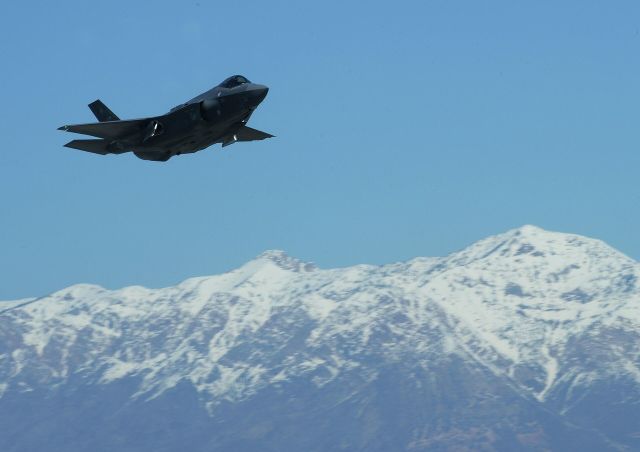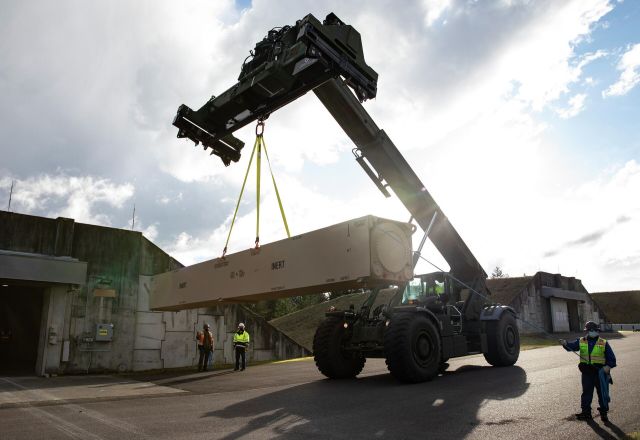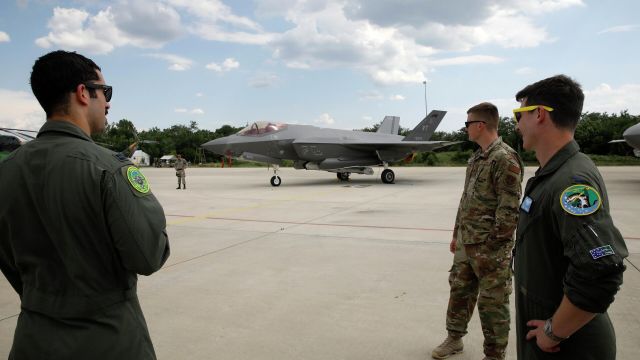MOSCOW, October 2 — RIA Novosti, Andrey Kotz. The Pentagon is striving to create weapons that even the most modern means of air defense are powerless against. The other day, the American military-industrial concern Raytheon received a contract worth almost a billion dollars for the development and testing of a hypersonic air-launched cruise missile HACM. It is expected that the promising ammunition will enter service with the Air Force in 2027. About the HACM project and other hypersonic developments in the USA — in the material of RIA Novosti.
For fighters
It's no secret that in the field of hypersonic weapons, the Americans were catching up. Both the White House and the Pentagon recognize this with a creak. The main geopolitical rivals of the United States are far ahead. Russia has adopted the ship's hypersonic "Zircon", aeroballistic "Dagger" and strategic "Avangard". China — medium-range solid-fuel missile DF-17. Some of these systems have already been baptized. In particular, in March, the Russian Air Force destroyed an underground ammunition depot in the Ivano-Frankivsk region of Ukraine with a Dagger.
Several programs are being implemented in the USA at once. One of the most promising projects is HACM (Hypersonic Attack Cruise Missile). This is an air-launched cruise hypersonic missile with a ramjet engine capable of accelerating up to six thousand kilometers per hour in the upper atmosphere. The range is unknown, but the Americans emphasize that they will surpass the longest-range air defense systems of Russia and China in this indicator.
"We consider tactical aircraft, mainly fighters, as the main carriers of HACM," US Air Force Chief of Staff General Charles Brown told reporters. — The new weapon will allow our commanders to plan combat operations much more flexibly. The vehicles equipped with it will be able to destroy the most valuable mobile targets in the enemy's immediate rear, while specialized bombers will solve strategic tasks."

American F-35A Lightning II fighter Image Source: © Photo : U.S. Air Force / Airman 1st Class Joshua D. King
Brown did not specify which aircraft he was talking about. Apparently, these are fifth-generation F-35 and F-22 fighters. The Pentagon is convinced that they are the least vulnerable to the air defense of a likely enemy. However, their low visibility has never been tested in real combat by modern anti-aircraft missile systems.
The HACM project is a tasty morsel for the American defense industry. In June last year, the Pentagon signed three 15-month contracts for the development of preliminary concepts of hypersonic cruise missiles with Boeing, Lockheed Martin and Rautheon corporations. The latter was chosen for the construction of prototypes. US allies are also participating in the program. In particular, Australia has promised to provide infrastructure for testing.
Failed tests
HACM is one of the two main hypersound aviation programs that should end with the creation of combat samples. There is also an ARRW aeroballistic missile with a glider from Lockheed Martin. It is assumed that this product will be able to reach speeds of over 20 Mach and beat 900 kilometers. The missile is designed to hit land targets, ships and targets that quickly change position. The main carriers of the ARRW are B—1B strategic bombers.
It was planned to take promising missiles into service already in 2022. However, the failures in the trials shifted the timing to the right. In 2021, the US Air Force conducted three tests of a rocket accelerator on a prototype of a promising rocket. Everyone failed. At the first flight tests in April, the product did not separate from the aircraft. In July, the rocket's engine did not turn on. In December, ARRW failed to launch again.
The tests ended with success only in May 2022. Additional tests are coming, which means that the missile will not enter service in the near future. Nevertheless, the US Air Force requested funding for the first 12 ARRW missiles. According to representatives of the Pentagon, production will be fast, as many elements are created using three-dimensional printing technology.
An option for the army
There are plans for hypersound and other branches of the US Armed Forces. For example, a long-range hypersonic missile system LRHW (Long Range Hypersonic Weapon) is being created for the ground forces. There will be several basic products. The main thing is an AUR (All—Up-Round) missile in a transport and launch container carrying a C-HGB (Common Hypersonic Glide Body) combat unit. A mobile launcher and a mobile battery command post are also being developed.

The first prototype of a long-range hypersonic weapon (LRHW) Image source: © Photo : Elliot Valdez
C-HGB belongs to the class of hypersonic gliders. The launch vehicle accelerates it to operating speed, after which an independent planning flight begins. According to the Pentagon, the C-HGB unit will be able to reach at least five Mach. More precise values are not called. The range, according to Breaking Defense, referring to a representative of the US army, will exceed 2,775 kilometers.
This makes it possible to attribute the LRHW complex to the class of medium-range missiles banned until recently by the INF treaty. They want to deploy the first battery in combat units already in 2023. In the future, Lockheed Martin specialists intend to develop an option for launching from ships and submarines. It is expected that it will enter service in 2025.
Underwater launch
The main competitor of the ship's version of the LRHW in the US Navy is the Conventional Prompt Strike (CPS) program, hypersonic missiles of instant global strike. As stated in the command of the American fleet, this product will allow the military to hit any target on the planet in less than an hour after receiving the appropriate order.
The new missiles are going to be installed on Virginia-class nuclear submarines. The Pentagon hopes to receive the first serial samples by 2024, the submarines will be converted for them by 2028. Up to 65 CPS will be placed on each Block V series submarine. In addition, these missiles are considered as the main ones for the newest low-profile destroyers of the Zumwalt type.
However, even here American gunsmiths faced a number of problems. In June, the US Navy failed tests — the product could not be launched from the carrier due to engine failure. This is the second failure — the first was in October 2021, when a prototype rocket for unknown reasons fell into the sea shortly after launch.

